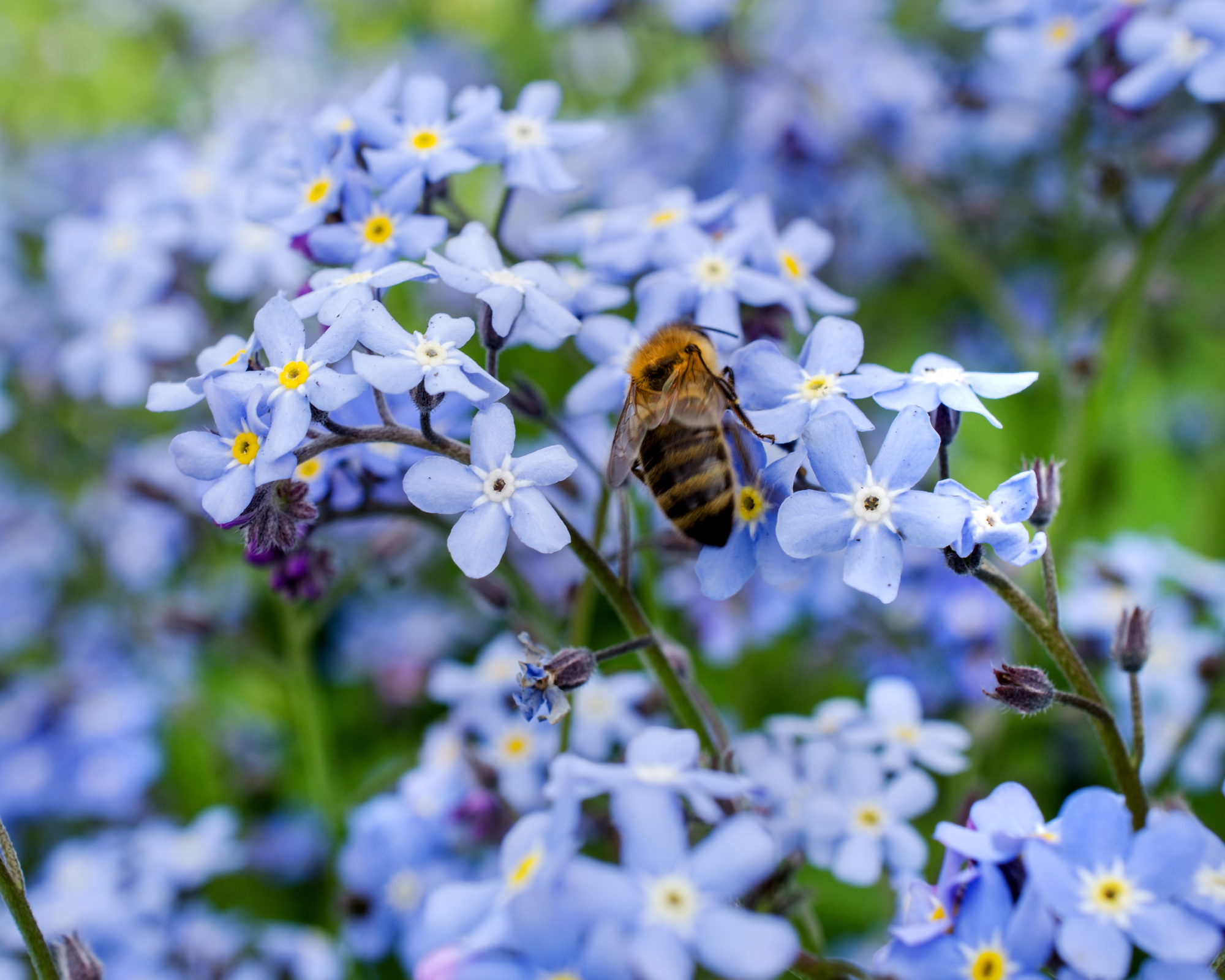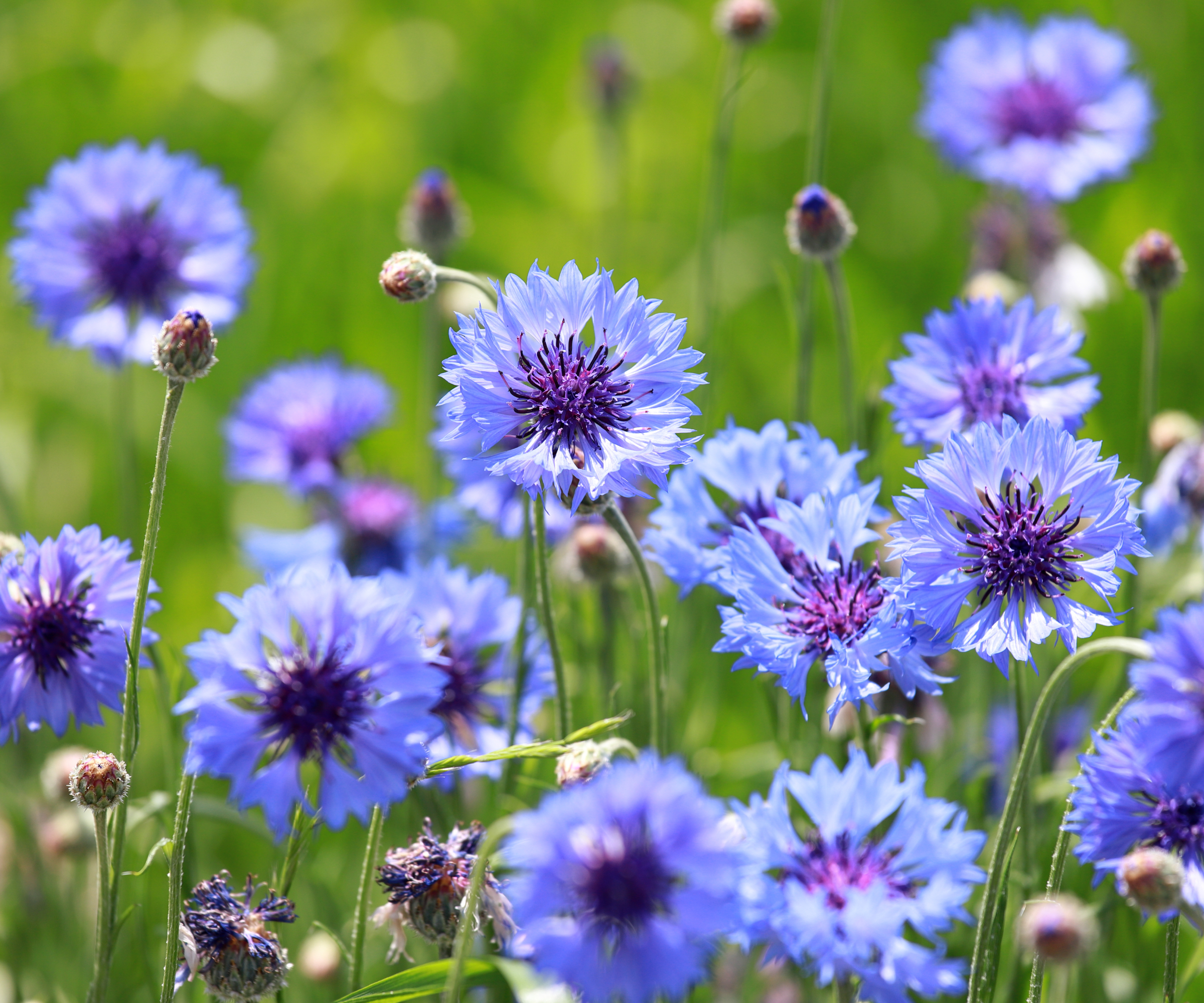How To Grow Forget-Me-Nots For Unforgettable Blooms In Your Spring Garden
Forget-me-nots can truly light up the spring garden! Though they've been popular for centuries, they can get out of control. Learn how to grow them with care.

Laura Walters
Quick Facts
Botanical name: Myosotis spp.
Height: 6-12 inches (15-30 cm)
Spread: 6-12 inches (15-30 cm)
Sun exposure: Full Sun, Part Shade
Soil requirements: Neutral, Wet
Hardiness zones: 3-9
When to plant: Spring, Fall
Bloom time: Spring
Forget-me-nots are known for their stunning color and reliable spring blooms. Long-revered for their sentimental value and symbolism, these flowers are among the most recognizable in the garden. So much so that the common name “forget-me-not” is often used to refer to one of several species of Myosotis plant.
In addition to their beauty, the forget-me-not’s hardy nature and ability to attract pollinators make it an excellent addition to many garden spaces. However, certain varieties of these enchanting blue flowers are considered invasive in many areas of the United States. Learning more about each type of forget-me-not is key in making certain garden beds are not overrun with unwanted invasives.
Gardeners should familiarize themselves with the various species of forget-me-not and their specific cultural needs to ensure they have the right spring-blooming plant in their garden. Below, we will explore how and when to plant forget-me-nots, how to care for forget-me-nots, and how to get rid of forget-me-nots that are out of control.
Forget-Me-Not Meaning
Forget-me-not flowers have long symbolized true love and remembrance. Several folklore stories describe how these beautiful blue flowers got their names.
The stories entail two lovers who live by a river. One day the young man falls in and gets swept away by the current. He tries to grab onto a plant with a blue flower on the riverbank but the river carries him away. He shouts to his beloved, “Forget me not!” as he clutches the flowers in his hand.
From the Middle Ages to today, forget-me-not flowers symbolize constancy and enduring love.
What Are “True” Forget-Me-Not Flowers?
The term “forget-me-not” is used as a common name for a wide range of plant species. Knowing more about each type is key in determining which is best for your growing space.
Sign up for the Gardening Know How newsletter today and receive a free copy of our e-book "How to Grow Delicious Tomatoes".
While some are ideal for the garden, other plants can become invasive. Within the United States, home gardeners should consider the impact of Myosotis types carefully, making certain to reference local laws and regulations before planting.
The true forget-me-not flower (Myosotis scorpioides) grows on tall, hairy stems which sometimes reach 2 feet (61 cm) in height. Charming, five-petaled, blue blooms with yellow centers explode from the stems starting in spring and rebloom sporadically through fall. Flower petals are sometimes pink.
Forget-me-not plants often grow near brooks and streams and other bodies of water, which offer the high humidity and moisture that is desirable to this species. Forget-me-not plants grow best in a damp, shady area, but can adapt to full sun. It is hardy in USDA Zones 5-9.
This perennial forget-me-not flower spreads easily, freely self-seeding for more of the wildflower to grow and bloom in shady spots where the tiny seeds may fall. As with most wildflowers, forget-me-not flower care is minimal.

Are Forget-Me-Nots Invasive?
Determining whether or not forget-me-nots are invasive depends on where you live and what variety you’re talking about. Most varieties of Myosotis are native to Europe and Asia, but these plants naturalize so easily in the United States that people sometimes mistake them as native plants.
Throughout much of the Midwest and the South, true forget-me-nots are considered invasive because they pose a threat to both backyard and local ecosystems. Myosotis sylvatica, or woodland forget-me-not, is also considered invasive in several Midwest states.
Instead of trying to control forget-me-not plants that have become invasive, plant a safe alternative in the Myosotis genus. The Alpine forget-me-not (Myosotis alpestris) has delicate blue flowers similar to its invasive cousin, but it is native to western North America. In fact, it is the state flower of Alaska.
Forget-Me-Not Care
If you live in an area where forget-me-nots are not invasive or you choose to grow a non-invasive variety like Alpine forget-me-nots, follow the below guidelines for strong and healthy plants.
Planting Forget-Me-Not Seeds
The best time to plant forget-me-not seeds varies depending on type. While some cultivars are grown as annuals, most forget-me-nots are actually perennials.
Provided you grow plants within their preferred hardiness range, you can sow seeds in either fall or spring. Annual varieties do best when planted in early spring following a brief period of cold stratification.
You can sow seeds outdoors, directly into the soil, or start them inside. If you decide to start seeds indoors, sow them approximately 4-6 weeks before your last frost date. Cover seeds with a good seed starting mix and water after planting. Keep soil moist to encourage germination.

Transplanting & Repotting
Most forget-me-not seeds germinate within one to two weeks of planting. After sprouting, seedlings require ample light and consistent moisture.
Harden off seedings and move them outdoors as soon as conditions have warmed in the spring. Wait until plants have two or three sets of true leaves before handling to avoid damaging the seedlings during transplant.
Once you move seedlings to the garden, provide regular watering throughout their first growing season to help plants establish.
If you wish to grow true forget-me-nots, it’s best to do so in containers to control the aggressive spreading of these plants. Grow forget-me-nots in containers with drainage holes in the bottom. Use a rich potting mix that retains moisture well to replicate the ideal growing conditions for forget-me-nots.
Propagation
In most instances, propagation by gardeners is not required in order for this plant to multiply. Forget-me-nots from seed are known to germinate readily, without additional care from gardeners.
This self-sowing habit aids in the plant’s ability to spread rapidly throughout the garden, and ultimately, escape cultivation. After the seeds fall to the ground, expect large numbers or new plants to emerge. You may need to thin out plants in order to better maintain neat beds.
Many species also spread by rhizomes that are located beneath the soil. You can also propagate forget-me-nots by division or rooting cuttings from their stolons and rhizomes.
Problems & Diseases
As noted, the invasive nature of forget-me-nots is problematic. It is not uncommon for these flowers to take over established plantings of annuals and perennials, which can make finding companion plants for forget-me-nots difficult.
Native flora may also be in danger, as these plants form tangled masses of foliage and dense mats of roots. Once established, large colonies can be immensely difficult to control.
In terms of disease, forget-me-not plants are considered quite robust. However, one of the most common forget-me-not problems is foliar disease. Mildew and rust can drastically decrease the overall ornamental value of this plant.

Frequently Asked Questions
Will forget-me-nots come back every year?
True forget-me-nots, woodland forget-me-nots, and Alpine forget-me-nots are all perennials and will come back every year. They are also self-seeding plants, so even if a plant dies, it's likely you will continue to have forget-me-nots in your garden.
Can I Plant Forget-Me-Not Seeds in Fall?
Fall is a good time to sow forget-me-not seeds. This is especially true of perennial species that require cold stratification. The natural fluctuations in temperature during fall and winter aid in germination and root development over winter.
What If I Plant Forget-Me-Nots Too Early?
Don’t worry about waiting until all chances of frost have passed before moving forget-me-not seedlings outside. Forget-me-nots are fairly hardy and able to withstand light frost and cool spring temperatures once they have been properly hardened off.
Explore More Stunning Spring Blooms
- Love the look of bleeding heart flowers but want blooms that last all summer? Wild bleeding heart is just what you need! This hummingbird-friendly perennial has heart-shaped flowers from April to September.
- Add a burst of color to your porch with these 8 brilliant potted flowers for spring!
- Get a head start on summer! Here are the best annual flowers to sow in spring for a garden that shines all season long.
This article features products available from third party vendors on the Gardening Know How Shop. Keep in mind that our plant inventory is limited—so if you’re thinking of purchasing, don’t wait!

Tonya Barnett has been gardening for 13 years. Flowers are her passion. She has transformed her backyard into a cut flower garden, which she regularly chronicles on her YouTube channel http://www.youtube.com/@tonyawiththeflowers.
- Laura WaltersContent Editor


